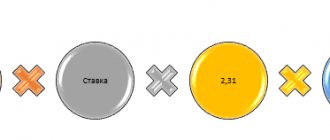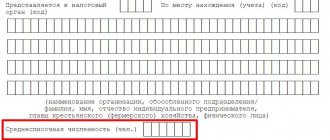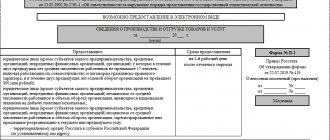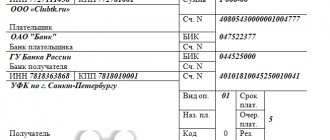Kontur.Accounting - 14 days free!
Personnel records and employee reports, salaries, benefits, travel allowances and deductions in a convenient accounting web service
Try it
In 2022, accountants submit the 4-FSS report four times. In January they report for 2022, in April for the first quarter, in July for the first half of the year, and in October for 9 months of 2022. The report for the entire 2021 will be submitted in 2022. We'll tell you what the 4-FSS report is, how to fill it out, in what ways and when to submit it.
Report 4-FSS: who takes it and why
4-FSS is a mandatory quarterly report for all legal entities and individual entrepreneurs who charge injury contributions for their employees under an employment or civil contract. It is also rented out by individuals who hire official assistants under an employment contract. For example, a personal chef or driver.
The report is needed to calculate insurance premiums for work-related injuries and occupational diseases of insured company employees. The calculation takes into account information on accidents and on the employee’s special assessment of working conditions and medical examinations. The form also contains insurance premiums at a fixed rate and information about the employer’s costs of paying sick leave.
Accounting form 4-FSS appeared in 2022. 4-FSS was approved in September 2016 and came into force in January 2022. The FSS last updated the form in June 2022 by order of June 7, 2017 No. 275, since then it has remained unchanged. A field has been added to the title page that is filled out by budget organizations. The remaining changes affected the division of responsibilities between the Social Insurance Fund and the Federal Tax Service. Part of the calculations have been removed from Social Insurance, and now the section on incapacity for work (temporary, illness or due to maternity) has been transferred to the Federal Tax Service.
In 2022, form 4-FSS contains the following sections:
- title page;
- calculation of the base for calculating insurance premiums;
- a table for employers who temporarily transfer their employees to other companies;
- calculations for compulsory social insurance against industrial injuries and occupational diseases;
- a table with actual costs for the payment of benefits for compulsory insurance against accidents and occupational diseases, financing of injury prevention measures, etc.;
- data on the number of insured employees who suffered due to an insured event at work during the year;
- general information on a special assessment of working conditions and the state of workplaces, information on mandatory medical examinations of employees at the beginning of the year.
Submit 4-FSS and other reports to Kontur.Accounting. The service itself will generate reports based on accounting data and information about employees.
Results
Adjustment of 4-FSS in 2021-2022 is carried out according to the rules provided for in Art. 24 of Law No. 125-FZ. If in the original calculation, due to errors, the base for contributions “for injuries” was underestimated, submission of an adjustment is mandatory. In such circumstances, before submitting the clarification, the missing amount of contributions and penalties must be paid. Then the company will be able to avoid a fine. In other cases, the employer can adjust 4-FSS voluntarily.
Sources:
- Federal Law of July 24, 1998 No. 125-FZ (as amended on December 2, 2019) “On compulsory social insurance against industrial accidents and occupational diseases”
- Order of the Federal Insurance Service of the Russian Federation dated September 26, 2016 No. 381 (as amended on June 7, 2017) “On approval of the form of calculation for accrued and paid insurance contributions for compulsory social insurance against industrial accidents and occupational diseases, as well as for expenses for the payment of insurance coverage and The order of filling it out"
You can find more complete information on the topic in ConsultantPlus. Free trial access to the system for 2 days.
Will 4-FSS change in 2022?
The FSS developed a new form 4-FSS, which it planned to put into effect in the first quarter of 2022. The update is due to the fact that from January 1, 2022, the entire country switched to direct payments - the Social Insurance Fund pays sick leave and benefits directly to employees, rather than reimbursing the employer.
According to the project, the shape should be significantly reduced. Information on the costs of insurance coverage, tables 2 and 3, will be removed from it. Table 1.1 will be added to decipher information about the base subject to contributions and the amount of calculated contributions for organizations with OP on a separate contribution rate. There are other changes that have not yet been approved.
According to the FSS, the new form will not have to be used in the 1st quarter of 2022, and there is a possibility that it will be introduced only next year. At the same time, everyone who reports using the old form and switched to the direct payments project from the beginning of 2022 must take into account the following: do not fill out line 15 in table 2 and do not fill out and submit table 3.
Title page
The title page is filled out by the policyholder, except for the subsection “To be filled out by an employee of the territorial body of the Fund.”
If the policyholder is registered in the SBIS system, then almost all fields of the title page are filled in automatically.
“Adjustment number” field is filled in as follows: if the calculation is primary, then “000” is indicated, if it is a corrective calculation, then the adjustment number “001”, “002”, etc. is indicated.
“Reporting period (code)” field is filled in in accordance with the codes given in the directory. In this case, the first two digits are the code of the reporting period (for example, if the calculation is made for the first quarter, then the code “03” is selected, for the half year “06”, etc.), and the last two digits indicate the number of requests from the policyholder for the allocation of funds for payment of insurance compensation (one appeal - 01, etc.).
“Calendar year” field automatically indicates the year for the reporting period for which the calculation is presented.
The “Cessation of activities” field is filled in only if the organization’s activities are terminated due to liquidation or termination of activities as an individual entrepreneur.
Field “Full name of the organization, separate division/full name” individual entrepreneur, individual" is filled in automatically in accordance with the name (full name) specified in the policyholder's registration card. When filling out this field, the full (without abbreviations) name of the organization (separate division) is reflected, corresponding to that indicated in the constituent documents or the last name, first name, patronymic (if any) of the individual entrepreneur.
The fields “TIN” , “KPP” and “OGRN (OGRNIP)” are filled in automatically from the client’s registration card in the program.
In the “OKVED Code” , select the code of the main type of activity of the policyholder in accordance with the all-Russian classifier of types of economic activity. These codes are determined by organizations and individual entrepreneurs independently and are contained in extracts from the Unified State Register of Legal Entities and the Unified State Register of Individual Entrepreneurs.
In the “Budgetary organization” , select the attribute of the policyholder in accordance with the source of financing:
- 1 - federal budget;
- 2 - budget of a constituent entity of the Russian Federation;
- 3 - municipal budget;
- 4 - mixed financing.
The attribute in this field is indicated only by policyholders who are budgetary organizations.
When filling out the “Contact telephone number” , the policyholder’s telephone number specified during registration is reflected.
In the “Registration Address” , organizations indicate their legal address, and individual entrepreneurs (individuals) indicate their registered address at the place of residence.
The field “Average number of employees” indicates the average number of employees.
The corresponding fields indicate the number of working disabled people and workers employed in hazardous industries.
All headcount indicators are indicated as of the reporting date, i.e. on the last day of the reporting period for which the calculation is submitted.
When filling out the field “Calculation is presented on ____ page.” The number of pages on which the calculation is compiled is indicated.
The field “with supporting documents or their copies on ___ sheets” reflects the number of sheets of supporting documents and (or) their copies (if any). Such documents may be: the original (or a certified copy) of a power of attorney confirming the authority of the policyholder’s representative (if the calculation is submitted by a representative of the insurance premium payer), etc.
In the section of the title page “I confirm the accuracy and completeness of the information specified in this calculation:” the following is indicated:
- 1 - if the document is submitted by the policyholder,
- 2 - if the document is presented by a representative of the policyholder;
- 3 – if the document is presented by the legal successor.
Next, indicate the last name, first name, patronymic of the head of the organization, individual entrepreneur (individual) or representative of the policyholder.
In the “Document confirming the authority of the representative” , the type of document confirming the authority of the signatory is indicated (for example, a power of attorney, its number and date).
When and where to submit the 4-FSS report
The 4-FSS report is submitted by all insurers: organizations and entrepreneurs with employees. The report must be sent to the territorial office of the FSS:
- at the location of the organization (including if there are separate divisions without their own current account or that do not pay salaries to employees);
- at the place of registration of the unit, if it is allocated to a separate balance sheet, has employees and pays them independently;
- at the place of residence of the individual entrepreneur.
According to Form 4-FSS, you need to report at the end of the first quarter, half year, 9 months and year. Deadlines for submission depend on the method of submitting the report.
4-FSS in paper form is submitted by legal entities with no more than 25 employees - before the 20th day of the month following the reporting period. The electronic format is intended for employers with more than 25 employees; they submit the report by the 25th.
Report for the first quarter of 2022:
- Until April 20 - in paper form;
- until April 26 - in electronic form.
The deadline for submitting the electronic report has been moved to April 26, since the 25th falls on Sunday.
For the second quarter of 2022, report on time:
- Until July 20 - in paper form;
- Until July 26 - in electronic form.
For the third quarter of 2022, the FSS is waiting for a report:
- until October 20 - in paper form;
- until October 25 - in electronic form.
For the fourth quarter of 2022, the FSS expects a report only next year:
- until January 20, 2022 - in paper form;
- until January 25, 2022 - in electronic form.
If an organization is undergoing liquidation, then the 4-FSS calculation must be submitted to the FSS before submitting an application for liquidation to the tax office. It must include data from the beginning of the year until the day the report is submitted to the fund. The amount of contributions must be transferred to the Social Insurance Fund within 15 days after submitting the report.
Correction instructions
The procedure for correcting errors in Social Insurance reporting depends on their type. Special reconciliation programs allow you to identify shortcomings even before sending the form to Social Security.
All types of errors that arise during the formation and submission of 4-FSS calculations are described on the official website of the Fund. The most common are failures of electronic certificates (EC) and electronic signatures. Errors arise due to the fact that the Social Insurance Fund regularly updates cryptographic data protection certificates. This is necessary to save and secure reporting information from malware and hacker attacks.
To fix the error, you need to remove the old FSS protection systems and install new ones. Instructions on how to update the ESFSS:
Step #1. Start the workstation.
On the work computer through which electronic 4-FSS payments are sent, open the workstation for signing and encrypting electronic documents:
Step #2. Installation of ES.
To install a new FSS ES, in the window that opens, click the “Install FSS authorized person certificate” button:
Step #3. Checking the installation.
If the ES is installed correctly, the following message will appear in the lower left corner of the workstation window:
Step #4. We generate a report.
After updating the Fund's ES, it is necessary to generate the report again. Check that the form is filled out correctly and correct arithmetic and other errors. Now sign the report with a valid electronic signature, encrypt it using a new electronic signature and send it to the Foundation.
Fines under 4-FSS in 2022
For submitting a paper report instead of an electronic one, a fine of 200 rubles will be imposed. Additionally, a warning or fine for officials is possible - 300-500 rubles.
You can see all current reporting and tax payment dates in our accounting calendar. For late submission of 4-FSS, a fine is imposed - 5% of the amount of insurance premiums for the last three months of the reporting period. The fine increases by 5% for each full and partial month of delay, but cannot be less than 1,000 rubles and more than 30% of the amount of contributions. There is also administrative liability for officials - a fine of 300-500 rubles.
Table 1
The first column of row 1 is always filled with a running total. If the report is generated for the first quarter, indicate the amount of payments for the first three months of the year, if for six months - the amount of payments for six months, if for nine months - the amount of payments for nine months, etc. In the second, third and fourth columns, indicate payments for each of the last three months of the reporting period.
For example, in a half-year report - the amounts of payments for April, May, June, in a report for nine months - payments for July, August and September, respectively.
How to fill out the 4-FSS report
Only small companies can submit a paper report. It must be filled out using a pen with blue ink, using block letters. Errors can be corrected by carefully crossing out the incorrect indicator with the signature of the policyholder and the date of correction. You cannot use a corrector.
After filling out 4-FSS, you need to number the completed pages and have the report endorsed by the head of the company or his authorized representative. Each sheet of the report is endorsed.
Each policyholder must submit the title page and sections 1, 2 and 5. The remaining sections are submitted if the relevant information is available.
Title page of the 4-FSS report
- We enter the registration number of the employing company (the policyholder).
- Next, we indicate the code of subordination - this is the number of the FSS branch at the place of registration of the policyholder.
- Enter the adjustment number: 000 (if this is the first report for a given period) or three digits in the range 001 to 010 (if this is an adjusted report).
- We indicate the reporting period. For the first quarter, in the “Reporting period (code)” field we write “03”. For half a year - code “06”. For 9 months - code “09”. For the year - code “12”.
- We enter the estimated year 2022 in the “Calendar year” column.
- We fill out the “Cessation of activity” column if necessary.
- Next, enter the name of the organization according to the company charter or personal data of an individual - individual entrepreneur.
- Enter the details: TIN, KPP, OGRN and OKVED.
- In the “Budgetary organization” field, the insured’s attribute is entered: 1 - Federal budget 2 - Budget of a constituent entity of the Russian Federation 3 - Municipal budget 4 - Mixed financing. This is only for budget organizations.
- Enter your mobile or landline phone numbers and registration address.
- We add information on the average number of employees, the number of employees with disabilities and employees engaged in harmful or dangerous work.
- At the end, we enter the code of the policyholder or his legal representative and submit it for approval.
Submit 4-FSS and other reports to Kontur.Accounting. The service itself will generate reports based on accounting data and information about employees.
- Table 1 contains information on the amounts of payments and other remuneration accrued to individuals for each month of the reporting quarter and on the total amount of accruals for the year. If there were no excluded payments, these amounts are equal to the contribution base. Additionally, the size of the insurance tariff is indicated, taking into account the percentage of discount or surcharge to it.
- Table 2 is filled out based on accounting records. Contains the calculated amounts for contributions for injuries from accruals for each month of the quarter and the amount of contributions additionally accrued after verification. From here the size of obligations to the budget is derived. The second column of the table reflects information on payment of contributions from the beginning of the year. Line 15 does not need to be completed for those working on a direct payment project.
- Table 5 contains data on the number of workplaces for which a special assessment of working conditions was carried out, and the number of workplaces for which preliminary and periodic medical examinations were carried out. According to the rules, all data in the table must be at the beginning of the year, that is, as of January 1, 2022.
These and other tables must comply with the rules of Appendix No. 2 to FSS Order No. 381 of September 26, 2016.
Explanation of the adjustments made according to the inspection report in the 4 fss report
Menu
Home — Financial law — Explanation of the adjustment of the audit carried out on the audit report in the 4 FSS report
Independent verification of the report FSS specialists carry out verification based on the benchmark indicators established for different columns of the table. Using their algorithm, you can evaluate the finished document yourself. For example, when filling out reports for the first quarter of the year, the amount of accrued contributions payable is always indicated as zero.
If the document is prepared based on the results of six months, 9 or 12 months, it is equal to the indicator at the end of the previous period. The policyholder cannot have both a debt to the Social Insurance Fund and the Fund's debts to it. Independent monitoring of completed reporting requires time and care.
There is a way to simplify this task - using special software products.
In what cases is it possible to make adjustments in the 4-FSS report?
Before starting to work with this document, you should review its original and take into account all the comments of the tax inspector. As practice shows, most complaints arise regarding the kopecks indicated in the amounts.
https://www.youtube.com/watch?v=FFU5tJ4EtDY
Once you have made all the appropriate changes to the database and achieved consistency, you can safely enter the changed values
When filling out the title page, you should pay attention to the line “Adjustment number” (Art.
17 of Law No. 212-FZ): it contains a digital value indicating which account calculation, taking into account the changes and additions made, is submitted by the policyholder to the territorial body of the Social Insurance Fund (for example: “001”, “002”, “003”, ... "010 " etc.).
Correction of the 4-fss form
AttentionThe sequence of actions is as follows:
- Log in to the social insurance website https://portal.fss.ru and go to the menu item https://portal.fss.ru/fss/services/f4input.
- On the portal, an electronic document template is filled out or an already generated report is uploaded.
- The 4-FSS report is checked on the FSS website, and the result produced by the program is analyzed.
Desk type of verification activities Non-visiting data reconciliation is carried out by employees of the regulatory body without the participation of the policyholder. The documentary basis for verification is the fact of receipt of the report.
According to its content, the correctness of calculations for insurance premiums, the completeness of their transfer, and compliance with the deadlines for repayment of obligations are analyzed.
Error 404
In the “code” line, the period for which the calculation is being submitted and the number of requests from the policyholder for the allocation of the necessary funds to pay the insurance compensation are entered. The reporting periods are the first quarter, half a year and nine months of the calendar year, while the billing period is the calendar year, which is designated by the number “12”.
Let us remind you that the amounts in the first and second sections of the report must match completely. Thus, if an adjustment is made for June 2011, then this value is entered in the “3rd month” line. In both sections, the data in this line and the total accrual amount for the last three months of the reporting period should be corrected.
4-fss adjustment
Such innovations lead to errors in the releases of electronic programs for the new reporting form, which, as a rule, appear immediately before the start of its submission and are reissued almost every day during the “hot period”.
Therefore, until the deadline for submitting reports, an accountant cannot be completely sure that he has the right option. The FSS recommends that policyholders do not wait for letters from the fund demanding that they submit an update, but conduct a data check themselves.
Penalties on insurance premiums do not need to be calculated independently in the same way as the FSS calculates them itself.
Typical errors After checking the 4-FSS reports for the second quarter, fund employees compiled a list of the most common errors when filling them out. 1.
Online magazine for accountants
Social security reporting is considered submitted if the 4-FSS report has been successfully verified. If any shortcomings are found in the document, they must be promptly eliminated in order to have time to submit a new version of the completed form within the established time frame.
Identification of errors is not grounds for postponing deadlines for submitting reporting forms. Subscribe to the accounting channel in Yandex-Zen!
- 1 Ways to check reports
- 2 Checking on your own
- 3 Desk type of verification activities
- 4 Monitoring as part of an on-site inspection
Methods for checking reports by Law of July 24, 1998 No. 125-
Important
Zero form 4-FSS in 2022
An organization or entrepreneur that did not work during the reporting period and did not make any contributions to employees must also report in Form 4-FSS. In this case, you must submit a zero form and thereby inform the Social Insurance Fund of the lack of activity in the reporting period.
As part of the zero form, a title page and tables 1, 2 and 5 are submitted, which are filled in with dashes. Along with the form, you can submit to the Social Insurance Fund an explanation that you did not work, did not pay salaries, and, therefore, did not make contributions to the fund. But this is not necessary; if necessary, the FSS itself will request the necessary information.
Submit your 4-FSS report to Kontur.Accounting, a service for convenient accounting and reporting via the Internet.
NTVP "Kedr - Consultant"
LLC "NTVP "Kedr - Consultant" » Pravo-info » Articles from magazines » UPDATED 4 FSS DO NOT ACCEPT: WHAT THEY ARE AND WHAT TO DO
Bugaeva N.G.
If an error is discovered in the submitted calculation of insurance premiums, the usual thing for an accountant is to submit an amendment. He is even obliged to do this if, as a result of an error, the amount of contributions was underestimated <1>. But, judging by the complaints of our readers, over the past 2.5 years, the FSS has often refused to accept accountants’ updated calculations in accordance with FSS Form-4 <2>. Is this legal? And what to do if you find yourself in such a situation?
Who is to blame and how to deal with it
When refusing to accept a payment, FSS employees give the same arguments: the period has ended, the reporting has been submitted, the electronic database is “closed” and there is no longer an opportunity to make changes to it. In their opinion, corrections should be made during the current period. And many accountants agree to this. If the amount of contributions in the submitted calculation turned out to be overestimated, then, in general, the accountant does not risk anything by not submitting an update. But if the amount was underestimated, then the benefit of submitting a corrective calculation is obvious. It may not save you from penalties, but it will definitely save you from a fine for non-payment of contributions <3>.
What to do if they don’t take the clarification? Those who submit payments electronically have the least problems. Representatives of the Foundation cannot restrict you from submitting such 4 FSS. When submitting an updated calculation in person, some accountants require a meeting with the management of the department and still submit the calculation. Or you can even send it by mail. The fact that you have the right to this is evidenced by a note directly on the title page of the new FSS Form-4, which is being used starting this year <4>.
By the way, it wouldn’t hurt to attach a cover letter to the updated 4 FSS with an explanation of what information you are correcting and why, and with reference to Law N 212-FZ, which obliges FSS employees to accept your updated calculation <5>. The letter can be composed in any form, for example like this.
Is it necessary to reflect changes in the current period?
But even if the update is successfully submitted, the new numbers will not be included in the FSS program. This means that when submitting the next calculation, the amounts of contributions accrued for payment at the beginning of the reporting period and accrued for payment at the end of the last period, and most likely some other data, will not converge, which will inevitably raise questions.
This is how the FSS specialist comments on this situation.
FROM AUTHENTIC SOURCES
ERMOLAEVA NATALIA NIKOLAEVNA - Head of the Department of Methodological Support of Budget Accounting and Reporting of the Financial Department of the Federal Social Insurance Fund of the Russian Federation
“If the payer discovers in the calculation submitted by him the fact of non-reflection or incomplete reflection of information, as well as errors leading to an underestimation of the amount of insurance premiums payable, the payer is obliged to submit an updated calculation. If the error did not lead to an underestimation of the amount of insurance premiums, the payer has the right to make the necessary changes to the calculation. The territorial bodies of the Fund are required to accept updated calculations from policyholders both for the current period, for example in May 2012 for the first quarter of 2012, and for past settlement periods - in May 2012 for 2010 or 2011.
The result of errors committed and discovered in the current year should be reflected in the policyholder's calculations in the reporting period when this error was discovered and an accounting entry was made in connection with this. If an error was discovered in May 2012 for January 2012, it is necessary to reflect the change in the calculation for the first half of 2012 and at the same time submit an updated calculation for the first quarter of 2012. If the error was discovered in May 2012 for 2011 ( in terms of additional accrual/reduction of insurance premiums for 2011), this should be reflected in the calculation for the first half of 2012 in line 4 “Accrued insurance premiums by the policyholder for past billing periods” of Section I with plus or minus signs, respectively. And at the same time, the policyholder must submit an updated calculation for 2011.
These updated calculations are not entered into the electronic database where the Fund previously entered information from policyholders’ calculations for past periods. Data from the presented updated calculations are used by the Fund when carrying out control activities - office and on-site inspections of the policyholder. But in any case, in accordance with the requirements of Law N 212-FZ, the updated calculations must be accepted by the Fund.”
Of course, nowhere is it stated that the insured is required to double-check errors. And the technical difficulties of the inspectors are also not your concern. But if you want to avoid unnecessary disputes with inspectors, then it’s easier to do as they ask. Otherwise, you will have to give explanations more than once and undergo reconciliations with the Social Insurance Fund.
* * *
Extra-budgetary funds seem to want to completely abandon the practice of accepting updated calculations. Indeed, with the delivery of the new RSV-1 Pension Fund <6>, a similar trend is observed. That would probably be even more convenient. But while Law N 212-FZ requires the submission of clarifications and this is precisely the condition for exemption from the fine for non-payment of contributions, it is safer to submit the clarified calculations, and then reflect the results of the recalculation in the current calculation, that is, reflect the data in it as if you had not made the clarification at all handed over.
——————————-
<1> part 1, 2 tbsp. 17 of the Law of July 24, 2009 N 212-FZ
<2> approved By Order of the Ministry of Health and Social Development dated March 12, 2012 N 216n
<3> part 4 tbsp. 17, art. 47 of the Law of July 24, 2009 N 212-FZ
<4> clause 5.19 of the Procedure for filling out the form (Appendix No. 2 to the Order of the Ministry of Health and Social Development dated March 12, 2012 No. 216n)
<5> clause 10, part 3, art. 29 of the Law of July 24, 2009 N 212-FZ
<6> approved By Order of the Ministry of Health and Social Development dated March 15, 2012 N 232n
First published in the journal "Glavnaya Ledger" 2012, N 11





